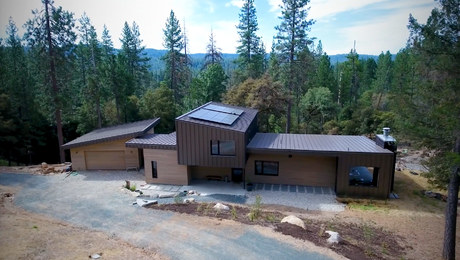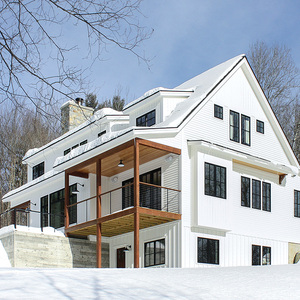what is the most cost efficient, paintable, structural lumber… untreated doug fir? treated fir? con com redwood? cuz the pvc option stinks and costs too much
Discussion Forum
Discussion Forum
Up Next
Video Shorts
Featured Story

Listeners write in about tools and California wildfires before asking questions about rotting exteriors, leaky garage roofs, and replacing concrete basement floors.
Highlights
"I have learned so much thanks to the searchable articles on the FHB website. I can confidently say that I expect to be a life-long subscriber." - M.K.
Fine Homebuilding Magazine
- Home Group
- Antique Trader
- Arts & Crafts Homes
- Bank Note Reporter
- Cabin Life
- Cuisine at Home
- Fine Gardening
- Fine Woodworking
- Green Building Advisor
- Garden Gate
- Horticulture
- Keep Craft Alive
- Log Home Living
- Military Trader/Vehicles
- Numismatic News
- Numismaster
- Old Cars Weekly
- Old House Journal
- Period Homes
- Popular Woodworking
- Script
- ShopNotes
- Sports Collectors Digest
- Threads
- Timber Home Living
- Traditional Building
- Woodsmith
- World Coin News
- Writer's Digest


















Replies
what is the most cost efficient, paintable, structural lumber
Depends on what it'll be doing for the next seventy years or so. Will this be siding? Interiior trim? Exterior Posts that are sunk below ground? Joists that have no exposure?
Also depends on where you are.
Unless you're the lead dog, the view just never changes.
exterior posts, rails, framing exposed to elements
And your location is????
Unless you're the lead dog, the view just never changes.
considerably dry...northern colorado
For rails and framing that will be exposed, douglas fir will work fine. And so long as it will be painted, and will shed water, it does not need to be treated.
Any post that is in contact with the ground needs to be treated.
Unless you're the lead dog, the view just never changes.
what do you think about using a solid stain on non treated fir?
I've done that dozens of times, on fences and outdoor railings. But note that you need to be very careful when building, so that there will NEVER be any water standing on a non-treated and non-painted surface.
The surfaces need to have just the slightest bit of a slant, so that water will be shed. Even with solid color stains, and all of the available water-sealers, standing water will eventually cause problems.
Also note that most outdoor stains will last only a couple of years before they need to be re-coated. I re-treat my deck every year, and the privacy fence around my hot tub every other year. And I try to convince my customers to do the same. The only exception is when a very rot-resistant wood had been used.
And although Doug fir is fairly good in that regard, it aint cypress or Ipe.
Unless you're the lead dog, the view just never changes.
I've had real good results using Jasco's Termin-8 on Doug fir. A "temporary" walkway in direct contact with the ground is still doing fine after about 35 years. The stuff smells bad for a week or two, and the color is dark green, which weathers to dark gray.
-- J.S.
can you paint over that?
I've painted over it, but it's not a wonderful experience. First, I let the Jasco dry for several months. Then I used the best Dunn-Edwards latex primer and two top coats of their top of the line exterior semi-gloss. That worked to hide the green, but the primer to Jasco bond is a little easier to break than I'd like. It scratches fairly easily. I'll be doing some touch-up soon, trying Zinsco's denatured alcohol based primer. The Jasco also does some waterproofing, about like Thompson's water seal, so the scratches are primarily an appearance issue. (BTW, the paint I used was white, and it's on windows, not the temp walkway.)
-- J.S.
Edited 3/8/2005 7:35 pm ET by JOHN_SPRUNG
Edited 3/8/2005 7:36 pm ET by JOHN_SPRUNG
I have milled a lot of exterior railings out of CVG fir. The resisns in the wood help it resist water and rot in such uplifted locatins as that where it will redry and not remain consistantly wet.
The same resins help it resist paint though. Blistering and bleed thruy are not uncommon. A good sanding to remove mill glaze and a bonding seal primer formulated for pitchy woods will help a lot. Definitely not a latex primer.
Welcome to the
Taunton University of Knowledge FHB Campus at Breaktime.
where ...
Excellence is its own reward!